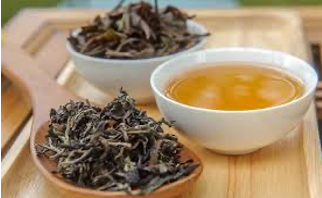Today’s Herb is Oregano
 Botanically known as Origanum vulgare, oregano is a flowering plant from the same family as mint. It is often used as an herb to flavour food.
Botanically known as Origanum vulgare, oregano is a flowering plant from the same family as mint. It is often used as an herb to flavour food.
Although it is native to Europe, it now grows all over the world.
Oregano has been popular ever since the Greeks and Romans used it for medicinal purposes in ancient times. In fact, the name oregano comes from the Greek words “oros,” meaning mountain, and “ganos,” meaning joy or delight.
It can be found fresh, dried or as an oil, and all are said to have significant health benefits.
Oregano oil appears to be useful both when consumed or applied to the skin.
Interestingly, it’s an effective natural antibiotic and anti-fungal, and may also help you lose weight and lower your cholesterol levels.
Health benefits of Oregano:
- can help body fight damage from harmful free radicals due to being rich in antioxidants nettle offers a variety of vitamins, minerals, fatty acids, amino acids, polyphenols and pigments, many of which act as antioxidants inside the body
- may be effective to help fight bacteria in the body
- could have anti-cancer properties – as its high in anti-oxidants, it can reduce cancer cell growth
- may reduce viral infections – two compounds, carvacrol and thymol are two compounds in oregano that have been associated with antiviral properties
- can help reduce inflammation in the body due to anti-oxidant properties
- may improve gut health by killing gut parasites and protecting against leaky gut
Oregano is versatile and easy to add to our diets and also safe to consume for most people.
If in doubt, as ever, please seek advice from a healthcare or medical professional.
Today’s spice is replaced by another tea – Oolong Tea
 Oolong tea is a traditional Chinese tea.
Oolong tea is a traditional Chinese tea.
It’s made from the leaves of the Camellia sinensis plant, the same plant used to make green tea and black tea. The difference is in how the tea is processed.
All tea leaves contain certain enzymes, which produce a chemical reaction called oxidation. Oxidation is what turns the green tea leaves into a deep black colour.
Green tea is not allowed to oxidize much, but black tea is allowed to oxidize until it turns black. Oolong tea is somewhere in between the two, so it is partially oxidized.
This partial oxidation is responsible for oolong tea’s colour and characteristic taste.
However, the colour of the leaves can vary between different brands, ranging from green to dark brown.
In addition to caffeine, Oolong tea contains vitamins, minerals, amino acids and beneficial tea polyphenol antioxidants.
Oolong tea has the following health benefits:
- may help maintain normal blood sugar levels and decrease the risk of developing type 2 diabetes thanks to the tea polyphenols
- may improve heart health thanks to its high anti- oxidant levels
- may help boost metabolism and therefore help with weight loss – mostly due to the combination of caffeine and polyphenols
- its caffeine, theanine and anti-oxidant content may improve brain function and mood
- may have protective effects against some cancers
- may contribute to bone and teeth health
- polyphenols is Oolong tea may help relieve eczema
Oolong tea should be healthy and safe to consume for most people, but as it is high in caffeine, should be consumed in moderation.
If in doubt, as ever, please seek advice from a healthcare or medical professional.
